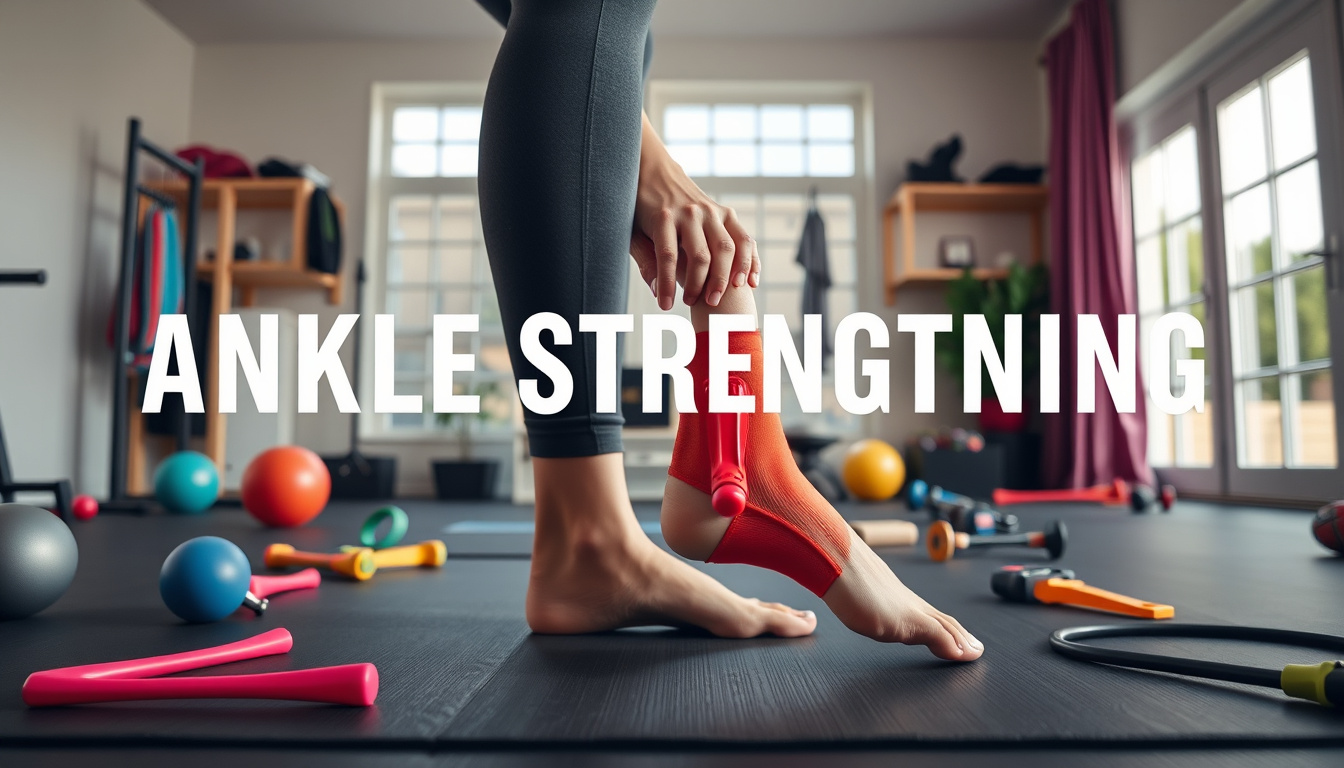
24 Mar Everything You Need to Know About Ankle Health: Tips for Strengthening and Injury Prevention
Ankles play a crucial role in our daily mobility, serving as the joints that connect our feet to our legs and enable a wide range of movements. Whether you’re walking, running, or playing sports, having healthy ankles is essential. In this comprehensive guide, we will explore everything you need to know about ankle health—from understanding their anatomy and function to common injuries and effective preventative measures. Whether you’re an athlete or just someone interested in maintaining joint health, these tips for strengthening and injury prevention will help keep your ankles in top condition.


Best Practices for Ankle Strengthening Exercises
Strengthening your ankle is crucial for enhancing stability, preventing injuries, and improving overall performance in sports and daily activities. To get the most out of your ankle strengthening exercises, consider incorporating a variety of movements that target different muscles and tendons. Start with basic exercises such as ankle circles and calf raises to build a solid foundation. As you progress, integrate resistance bands or weights to increase the intensity of your workouts. Balance training, such as standing on one leg or using a balance board, engages the stabilizing muscles around the ankle, further enhancing its strength and resilience. Remember to focus on controlled movements and proper form to maximize effectiveness while minimizing the risk of injury. By following these best practices for ankle strengthening exercises, you’ll not only boost your ankle strength but also improve your overall agility and coordination.
Injury Prevention Strategies for Healthy Ankles
Injury prevention strategies for healthy ankles are crucial for anyone looking to maintain an active lifestyle. A well-conditioned ankle not only supports mobility but also plays a key role in preventing injuries that can derail your fitness routine. One of the most effective ways to strengthen your ankles is through targeted exercises, such as resistance band workouts and balance training, which enhance stability and flexibility. Incorporating ankle mobility drills into your daily routine can also be beneficial, as they promote joint health and decrease the likelihood of sprains and strains. Additionally, wearing appropriate footwear that provides support and cushioning is vital, particularly during high-impact activities. Lastly, warming up properly before exercise and gradually increasing intensity can significantly reduce your risk of ankle injuries. By implementing these strategies, you can ensure your ankles remain strong and healthy, allowing you to enjoy physical activity without the worry of injury.

Signs of Ankle Problems and When to Seek Help
Ankles are crucial for mobility, supporting the weight of our bodies while allowing us to walk, run, and engage in various physical activities. However, ankle problems can arise for numerous reasons, including injuries, overuse, or underlying health conditions. Some common signs that may indicate an issue with your ankle include persistent pain, swelling, difficulty moving the ankle joint, bruising, and changes in skin color around the area. If you experience sharp pain during movement, a feeling of instability, or if the swelling does not subside with rest and ice, it’s essential to seek medical help. Early intervention can prevent more severe issues and ensure that your ankle returns to full function, allowing you to stay active and healthy.
Tips for Recovery and Rehabilitation after Ankle Injuries
Recovering from an ankle injury requires a well-structured approach to rehabilitation, ensuring that you regain strength and mobility while minimizing the risk of re-injury. First and foremost, it’s essential to consider the R.I.C.E method—Rest, Ice, Compression, and Elevation—as the initial treatment for any ankle injury. After the initial healing phase, gently begin range-of-motion exercises, followed by strength training to improve the ankle’s stability. Incorporating balance exercises, such as standing on one leg or using a balance board, can significantly enhance your proprioception and overall ankle function. Additionally, consider working with a physical therapist, who can tailor a rehabilitation program specific to your needs and guide you safely through the recovery process. Remember, patience is key: rushing back into sports or physical activities can lead to setbacks. With these tips for recovery and rehabilitation, you can effectively support your ankle’s healing journey and return to your regular activities with confidence.

Sorry, the comment form is closed at this time.